This was published 3 months ago
The urban fringe suburb that used to be known as ‘Tradie Town’
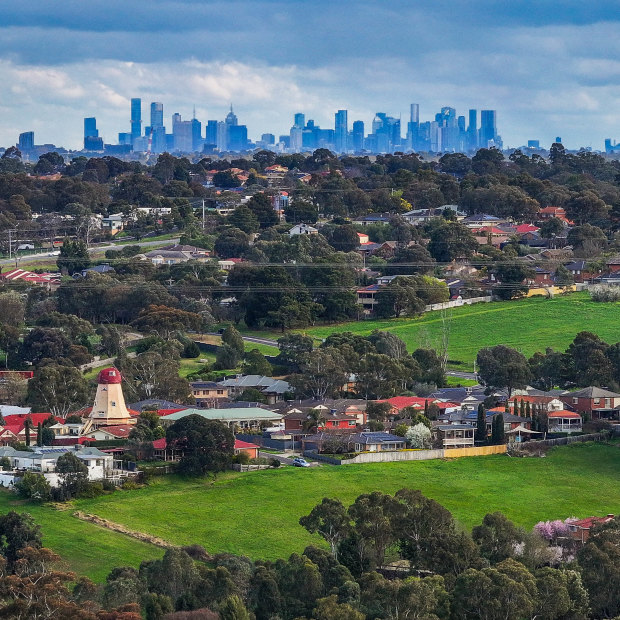
Diamond Creek on the outskirts of Melbourne.Credit: Joe Armao
Melissa Russell says she knew when she started looking to buy her first home she wanted to raise her family in Diamond Creek.
But she and her now-husband Scott became disheartened by the competition in the traditional homebuyers market. Determined to find a place they loved, they wrote letters introducing themselves and outlining what they were looking for in a home.
They walked their favourite street in the neighbourhood – wide, central but not too busy, and only a street away from Scott’s sister – and left the note in the letterboxes of their favourite homes. The properties weren’t for sale, but it didn’t matter. Russell says there was something about Diamond Creek that allowed them to trust the process.
“I feel like you can talk to people a bit easier here,” she says.
“There’s a certain type of person in this area, and you wouldn’t be here if you’re not a community person.”

Melissa and Scott Russell outside their Diamond Creek home.Credit: Joe Armao
That unorthodox community spirit has endured since the suburb was first settled in the late 1830s, beginning with the early white arrivals who named their town after a dead bullock – or so the legend goes.
Nillumbik Historical Society president Jean Verso says the area was initially referred to as Wilsons, after one of the original settler families that she herself is descended from six generations later.
The traditional owners of the land – the Wurundjeri-willam clan of the Woi-wurrung speaking people – were forcibly displaced after occupying the land for thousands of years. The Wurundjeri name for the region is “nillumbik”, meaning “shallow earth”, which remains the name of the local government area today.
At some point in the late 1840s, the region began to be referred to as Diamond Creek, though it wasn’t made official until 1867.
Verso says the truth is likely lost to history, but almost 180 years later, a story of a bullock – a gelded bull – named Diamond is the local favourite.
In colonial times, bullocks traversed the rough and arid land transporting materials between towns. One day, a lead bullock named Diamond wandered into the creek and drowned. People began to refer to the place as “down by the creek where Diamond died”.
A second theory involves a land surveyor referring to a part of the creek as the Diamond Rivulet, which may be more plausible but is much less interesting to locals.
“People now, they just think it’s fantastic that Diamond Creek is named after a bullock that died in the creek,” Verso says.
“It’s a sad story, but it’s different to other places. It’s not named after some explorer or some local person, or whatever. It’s named after something, an event that happened.”
Miners flocked to the town when gold was discovered in 1862, and the township built up around a new mine.
“Because you had miners, you had to have pubs. There were actually four pubs in Diamond Creek … They became places where people gathered,” Verso says.
“The community feel of the place I don’t think has really changed. People take pride in that, and they try to keep that up.
“People supported the churches, they supported the local associations.”
One of those local associations was the football club, which has a proud history. The Diamond Creek Football Club – now with a netball club – produced Collingwood’s Coventry dynasty.
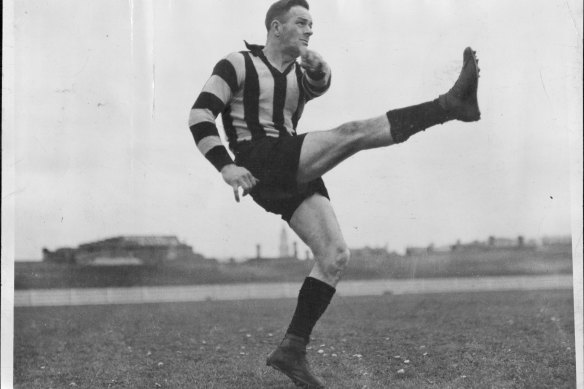
Collingwood’s Gordon Coventry kicked 1299 goals in the VFL.Credit: Fairfax Media
As many as four Coventrys played for the Magpies, including Gordon, who held the VFL/AFL all-time goalkicking record for 62 years until Swan Tony Lockett broke it in 1999. He is the namesake for the Coventry Oval in Diamond Creek, and he and his brother Syd are buried in the local cemetery.
More recently, before following the path to Collingwood stardom, Heath and Rhyce Shaw cut their teeth in the rough northern suburban competition.
Diamond Creek is still a sporting town. Two football ovals straddle the main road right in the centre of town, and the netball facilities housing eight courts are among the best north of Melbourne. Community Bank Stadium hosts the basketball, and park-run – a free five-kilometre group run – brings hundreds to the Diamond Creek Trail on a Saturday morning. There is an unapproved BMX track tucked away off the trail, rebuilt by defiant locals after the local council levelled the decades-old jumps in 2021.
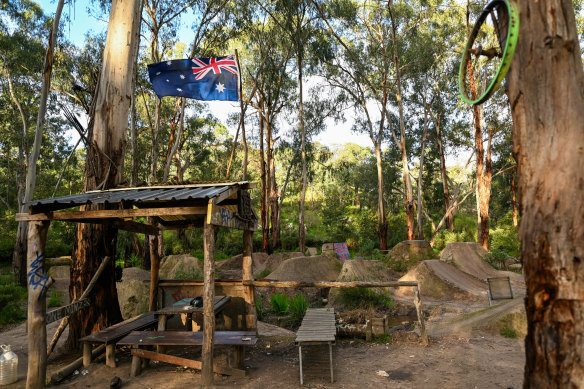
Locals built a BMX track beneath the towering gums of Diamond Creek.Credit: Joe Armao
The suburb is still waiting on a library to be built, but the best prospective building is already occupied by group fitness classes and a gym.
“Diamond Creek has a really strong community culture ... There’s a really strong sense of bonding within the community,” says Kerry Jones, secretary of the Rotary Club of Diamond Creek.
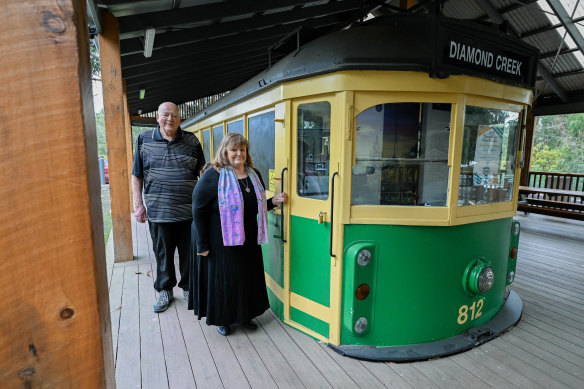
Rotary Club of Diamond Creek president Warwick Leeson and secretary Kerry Jones. They collaborated with the Diamond Creek CFA and the Men’s Shed to get a retired tram for the community, which they have outfitted as a cafe.Credit: Joe Armao
When she put out a call for volunteers in a local Facebook group earlier this year to help distribute food to people in need, 40 people contacted her.
“I think that just shows, people want to help. People want to be a part of the community, and it feels good to be able to give back,” she says.
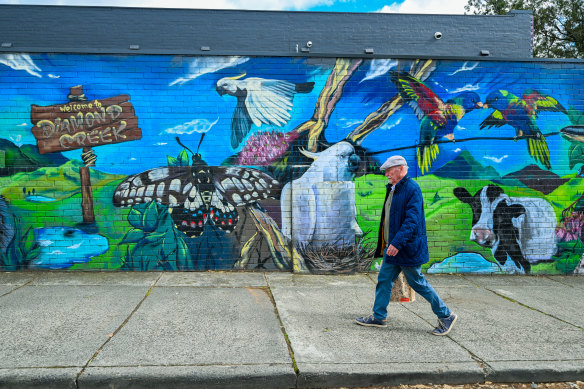
Diamond Creek sits in a green wedge.Credit: Joe Armao
Local councillor Peter Perkins, who is in his 15th year of service, says the local volunteerism culture is one of the things that makes Diamond Creek special.
“Everything good in Diamond Creek is run by volunteers,” he says.
Perkins says the suburb distinguishes itself even from its closest neighbours of Eltham and Greensborough, both culturally and geographically.
“There’s a different thing about Eltham with their mud-brick and their artisan culture, that’s not so prevalent in Diamond Creek. Diamond Creek used to be referred to as ‘Tradie Town’,” he says.
He says tree-lined arterial roads break up the urban sprawl and create a feeling of separation between suburbs.
“There’s a sense of arrival when you get to Diamond Creek,” Perkins says.
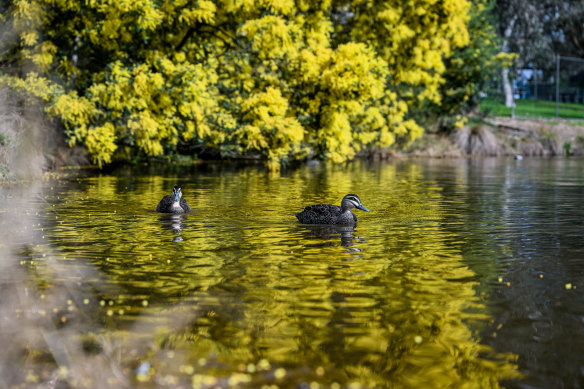
The Diamond Creek Trail winds through the suburb past the duck pond.Credit: Joe Armao
He says the suburb – or township, as he likes to call it – has been less gentrified and property prices remain more affordable than its neighbours.
“A suburb just indicates it’s part of greater metropolitan Melbourne, which it is, but it’s more than just a suburb,” he says.
“It’s got its own little identity, and I think people are quite proud of where they come from.”
But with the state government bearing down on the locality as a prospect for new development, Perkins says the council has concerns over how best to implement growth while protecting the suburb’s character.
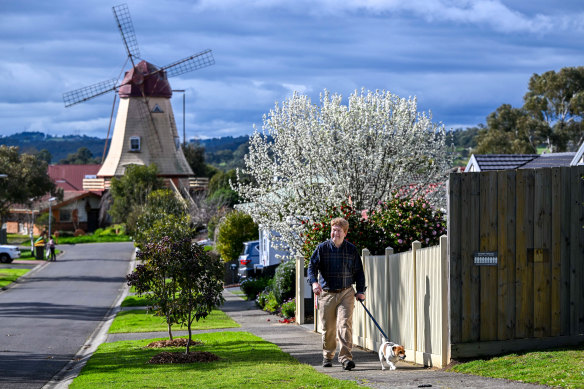
The windmill house on Windmill Rise has been a feature of the landscape since being built by Dutchman Peter Van Wunnik in 1974.Credit: Joe Armao
He says Nillumbik is one of the 12 green wedges around Melbourne the state government has committed to protect. Diamond Creek sits on the urban growth boundary, meaning any major development must happen within the suburb’s existing limits.
Perkins says the Shire of Nillumbik planning strategy had aimed to build about 3500 new homes in the council area in the next 25 years, but in June, the state government hiked the target to 12,000.
The new goal more than doubles the existing number of dwellings in the local government area, and must be built within the urban regions that make up only 9 per cent of the land area in the shire.
“We’re scratching our heads a bit as to how that could be achieved,” he says.
Perkins says too-rapid development makes it more difficult for the council to provide services, with kindergarten places already more difficult to secure and traffic congestion worsening.
“Everything’s busting at the seams at the moment,” he says.
“There’s that balancing act of trying to provide housing to a growing population, but still trying to maintain that sense of community and our neighbourhood character as we know it.
“Change is a good thing because I think everyone’s happy to see more people live in the area, but it needs to be gradual.”
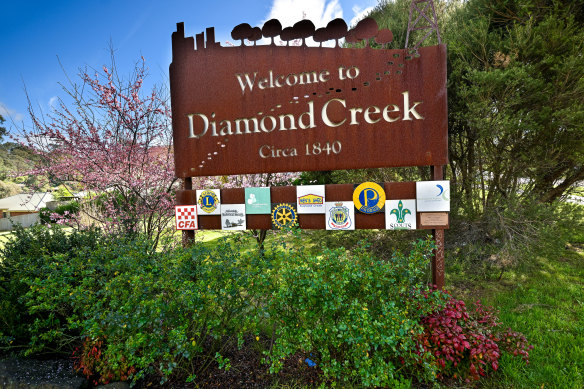
Diamond Creek’s volunteer organisations have a history of collaboration.Credit: Joe Armao
The town’s greenery is a big attraction, but it also poses a threat; the prospect of bushfires looms large over a town that has had its share of narrow escapes, and tragedies.
Parts of the suburb, including the library, were destroyed in 1969, and it only narrowly escaped the 2009 Black Saturday fires because of a change in wind direction.
“Anywhere where there’s an urban-rural interface, where there’s a lot of houses up against rural land holdings … There is a risk of bushfire to the town,” says Perkins, who was captain of the Diamond Creek CFA for 10 years.
But the community remains committed to defending it.
Firefighter Fiona Macken says CFA volunteers sacrifice a lot – weekends, sleep, family time – but she has found a second home within the brigade. She now works for the CFA as well as continuing to volunteer, and it is where she met her partner, who is also the captain.
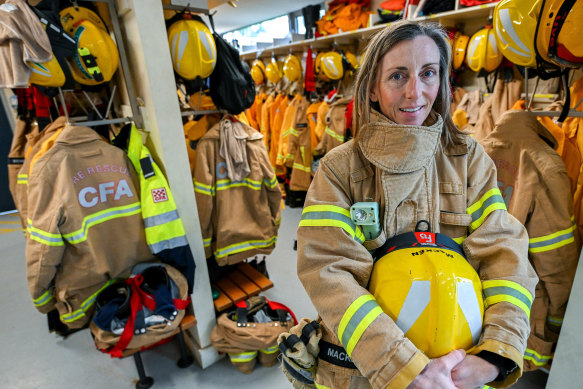
Firefighter Fiona Macken lives only a kilometre from the Diamond Creek CFA station, meaning she is often on the first truck out in an emergency.Credit: Joe Armao
“I haven’t lived anywhere else for a long time … I can’t comment on the communities and whether or not volunteering is really strong, but Diamond Creek does feel pretty special,” she says.
“Not that we’re biased.”
Despite the dangers, residents remain loyal to the suburb.
According to the latest data from the Australian Bureau of Statistics, 88.3 per cent of households were owned by the occupiers, with 35.3 per cent of those being mortgage-free. The state average for home ownership is 68.3 per cent.
The median household income is much higher than the Victorian median, at $2508 per week compared to $1759.
One consequence of higher levels of long-term home ownership is a lack of diversity in the population. There are lower levels of migration in Diamond Creek, with 83.2 per cent of residents born in Australia, compared with the Victorian average of 65 per cent. Locals are also more likely to have both parents born in the country: 61.4 per cent compared with the state average of 42.4 per cent.
It is not just people who put down roots in Diamond Creek. Businesses stick around too.
Vanessa Di Pietro and her brother, Daniel, are the third generation of their family to run what is now Nillumbik Cellars and The Vines Cafe.
“We know so many people in the area, we know their stories. We’ve had children come in from such an early age, and now they’re working for us. So it’s really come full circle,” Vanessa Di Pietro says.
“You invest a lot of time in the business, but you invest more into the community.”

It is a true family affair at the Nillumbik Cellars and The Vines Cafe with Vanessa, Daniel and Albert Di Pietro.Credit: Joe Armao
When The Age visited last week, Di Pietro’s 80-year-old father Albert, the owner of the business, was out making a delivery for the Cellars.
She says her dad sold the business, which started as a grocery store, but he missed it so much he bought it back five years later and is now meandering to retirement.
“Dad’s just turned 80, and his livelihood, his friendships have all actually come out of this business. We had a bit of a party for him the other day here just inviting all the people that come in and visit him,” she says.
“And you know, that’s why he’s finding it hard to hang up the apron, so to speak.”
Back over the train tracks, Melissa Russell’s ingenuity of letterboxing prospective future homes has landed her in a white weatherboard home on a grassy hill – her favourite on the street, even before she bought it.
The expectant mum says she is looking forward to raising her family there, with plenty of space for children to roam, and hopefully a chicken coop for herself.
She says there is nothing flashy about Diamond Creek, but she appreciates its quiet charm.
“In a small community because there’s not so much turnover, it’s not easy to keep up with trends,” she says.
“I wouldn’t say it’s a trendy suburb ... but it’s quaint.”
Get the day’s breaking news, entertainment ideas and a long read to enjoy. Sign up to receive our Evening Edition newsletter here.